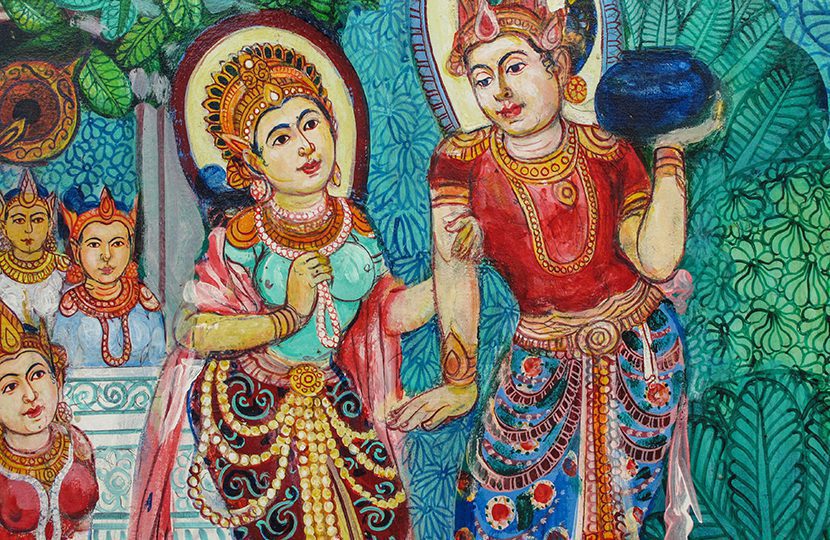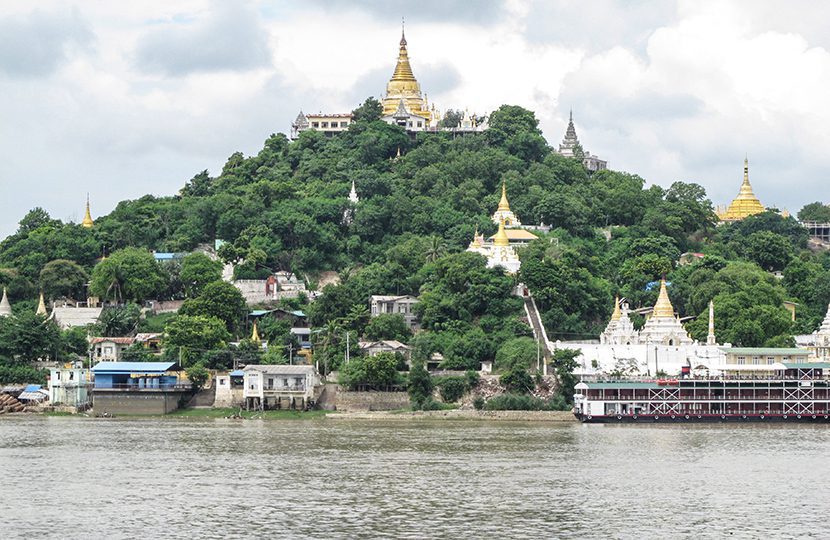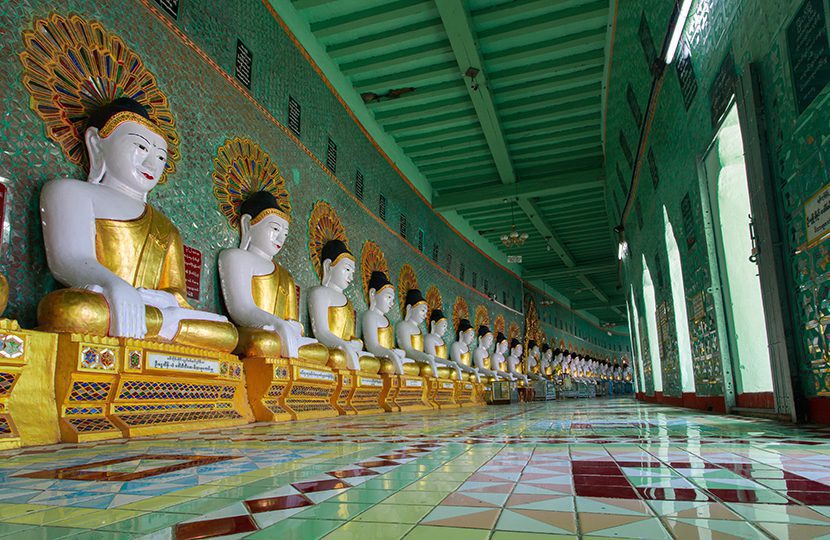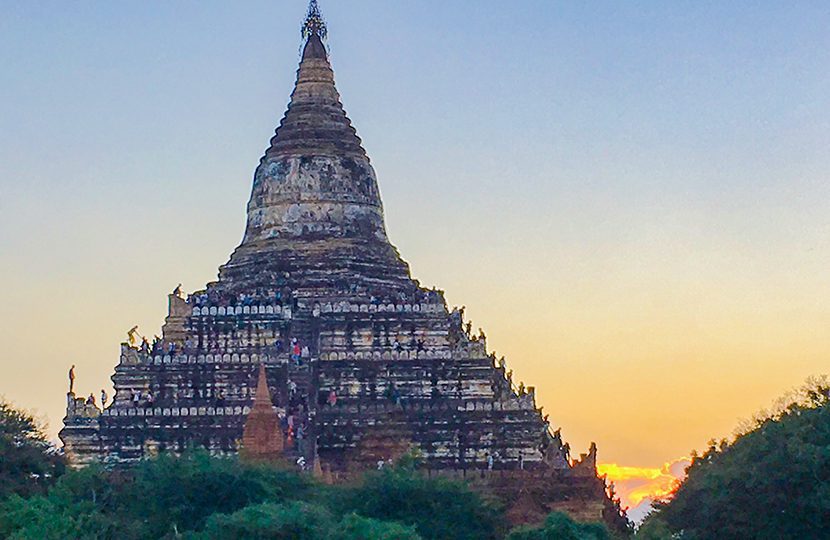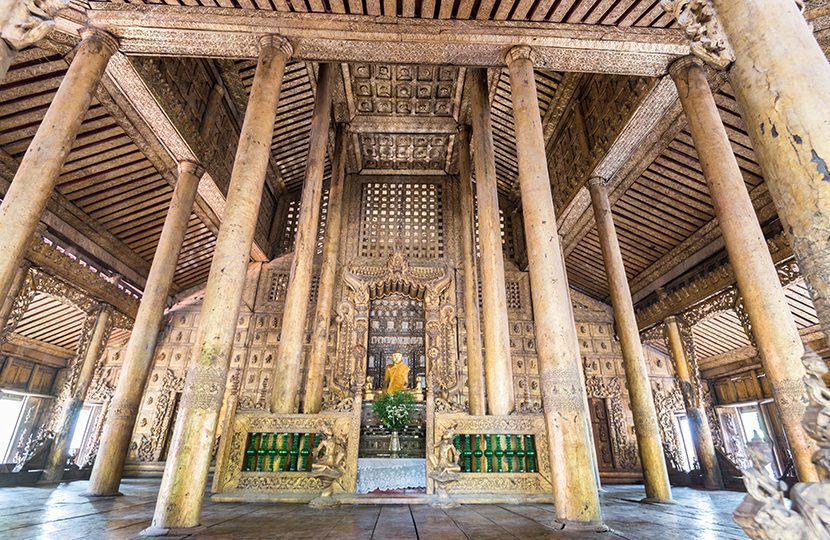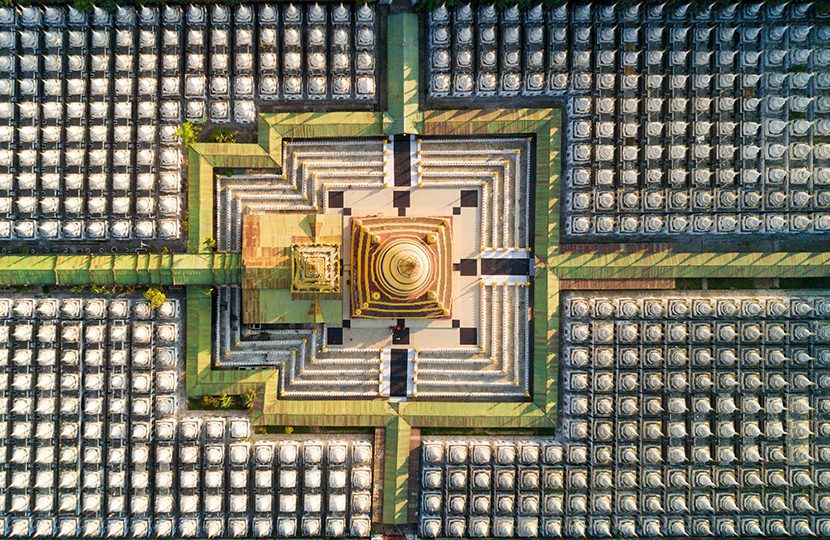A journey up Myanmar’s Ayeyarwady River from Mandalay to the far northern trading town of Bhamo, near the Chinese border.
Cruising down memory lane
A journey up Myanmar’s Ayeyarwady River from Mandalay to the far northern trading town of Bhamo, near the Chinese border.
It’s early morning when we dock at the riverside trading town of Bhamo in the northernmost part of Myanmar. Just 65 kilometres from China, it’s a bustling border town of potholed streets jammed with cars, buses, pickup trucks and motorbikes leaving whirls of dust. Clutters of shops sell gold jewellery, jade, clothes, toys, knock-off CDs and lots of mostly cheap Chinese goods. But there are also fine examples of old teak houses and magnificent broad, overhanging trees shading a quaint riverfront.I am travelling along the Ayeyarwady on Belmond’s luxury ship, the Orcaella, named after the endangered snub-nosed dolphins that swim the river. Over the next several days we will experience the people, their beliefs, customs, and daily existence along one of Asia’s great rivers.The Ayeyarwady flows from the Himalayan glaciers and sweeps down through the heart of Myanmar—formally called Burma—to the fertile delta region into the Andaman Sea. Also known as the Irrawaddy, it is the country’s largest and most important commercial waterways.
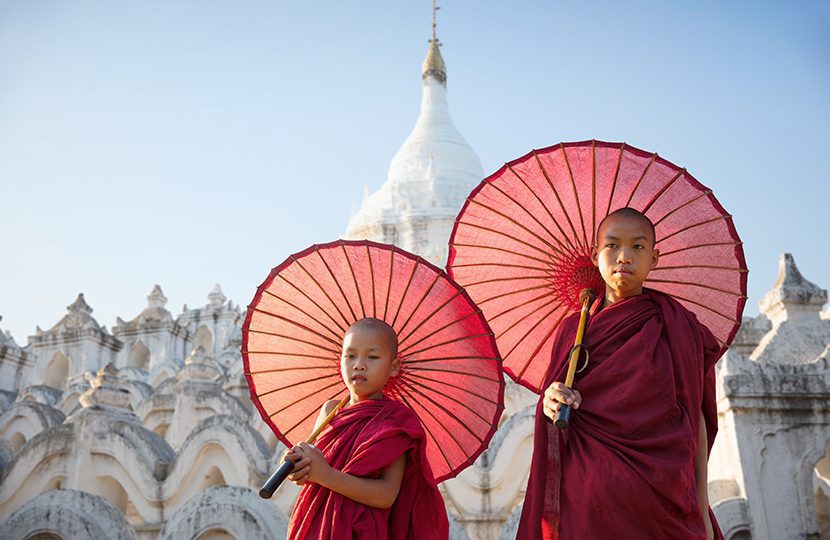
Little monks at Mingun Pahtodawgyi Mingun paya
The trip began several days ago down river in Mandalay, the country’s second-largest city and cultural capital. We will re-visit it on the river-ride back. For now, we visit Soon U Ponya Shin Paya on the southern side of 240-metre high Sagaing Hill. The Buddhist temple features a 30-metre high gilded stupa that was originally built in 1312. Legends claim the structure miraculously appeared overnight from a superhuman act by the king’s minister who was influenced by a magical Buddha relic that he found in a betel-nut box. From the balcony, I take in the spectacular view of pagodas and, across the brown Ayeyarwady, the Shan hills.
We then set sail to Mingun. The little riverside village has a trio of unique sites, the most famous being Mingun Paya, also known as Mingun Pahtodawgyi. Beneath a banyan tree, I marvel at what is left of this massive, incomplete square structure. Roughly 73-metre cube of russet-coloured bricks on a 140-metre lower terrace, it’s meant to be the world’s largest stupa. But when King Bodawpaya died in 1819, only the bottom third was completed.
Next is the magnificent 14-metre high, 90-ton Mingun Bell, reportedly the largest un-cracked hanging bell in the world, commissioned by the same king in 1808. I give the bell a good whack with a wooden mallet and hear a deep bass ringing that, I’m told, will bring me good luck.
I then stroll past souvenir shops selling marionettes hanging from tree branches, shelves of wooden masks, Buddha images and other handicrafts. I reach the third major site, Paya Hsinbyume, an attractive pagoda built in 1816 by the future King Bagyidaw in memory of one of his wives. The pagoda rises in seven undulating whitewashed terraces symbolising the seven mountain ranges around Mt Meru, which, according to Buddhism is the centre of the Buddhist universe.
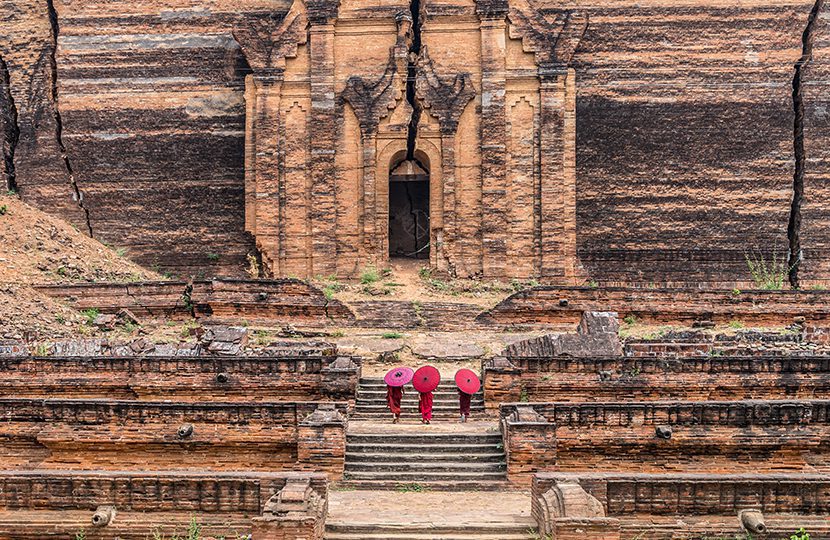
Three Buddhist novice are walking and holding the red umbrella at Mingun Pahtodawgyi, Bagan, Mandalay
We then slowly putter up river for a few hours to the small village of Nwe Nyein, known for producing high-quality, glazed earthenware pottery that’s sold throughout the country. The cottage industry involves more than half the village’s population.
There are no store-bought pottery wheels, electric kilns, fancy tools and other equipment here. The entire production is handmade by traditional methods. And it’s a laborious process. Inside one workshop dusty sunlight seeps through open windows and cracks in the wooden walls. A couple of babies sleep in rockers as young girls squat on the hard dirt floor spinning with their hands—some standing use their feet—wooden swivel bases as older, squatting women shape moist, reddish clay, harvested from the nearby riverbeds, into various small-sized pots. Outside, women carry the small pots stacked and balanced on their heads to dry outside in the hot sun.
In another workshop young women are also squatting on the floor spinning wooden swivel bases. But here, men are making huge, 50-gallon, swollen-shaped water pots. I watch one potter, barefoot in a sarong and T-shirt, using one hand to shape the contour from inside the pot while the other hand carefully smooths and gently shapes it from the outside.
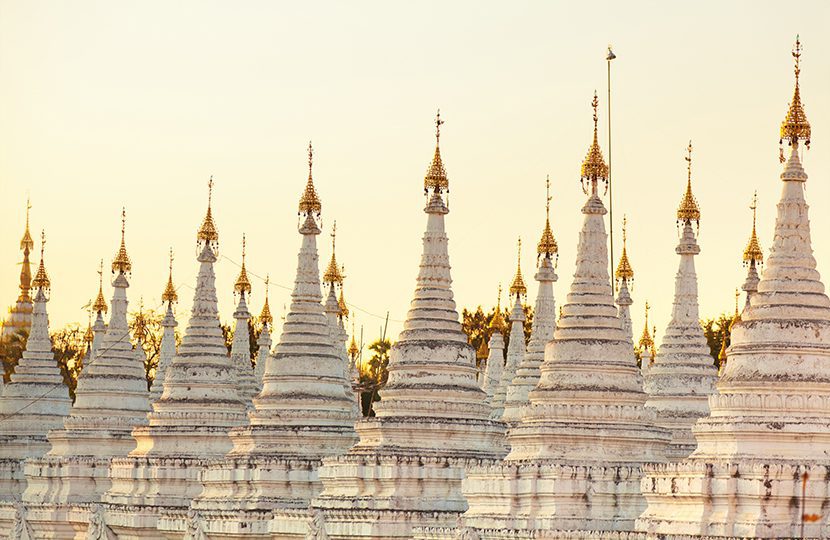
Kuthodaw Pagoda is a Buddhist stupa, located in Mandalay that contains the world’s largest book. It lies at the foot of Mandalay Hill
As we travel further upriver we stop at Kyan Hnyat, a small, quaint village on Ayeyarwady’s shores. As I walk along a red dirt path past dark-wooden houses on stilts, some with a few chickens scratching around in the dirt, I hear a rhythmic chorus of children. I open a wooden gate, peek in and enter. In a classroom with woven bamboo walls are rows of children sitting at long wooden tables all reciting aloud in unison from a textbook. A teacher stands listening in the back.
Like almost all Myanmar women young and old, the girls wear thanakha—swirls of yellow powdery paste made from ground bark and worn on their cheeks and foreheads both as a sunscreen and cosmetic. I greet them with the popular greeting of “mingalaba.” Although extremely shy, they respond in kind with giggles and smiles.
Having sailed to the port town of Katha during the night, it’s an early morning visit in a bicycle trishaw to the main market, a labyrinth of narrow aisles and pungent smells. On bamboo-woven platters are piles of morning glory, bitter gourd, fermented fish, pungent spices, inner organs, skinned goat heads, and pastries cooking in bubbling brown oil.
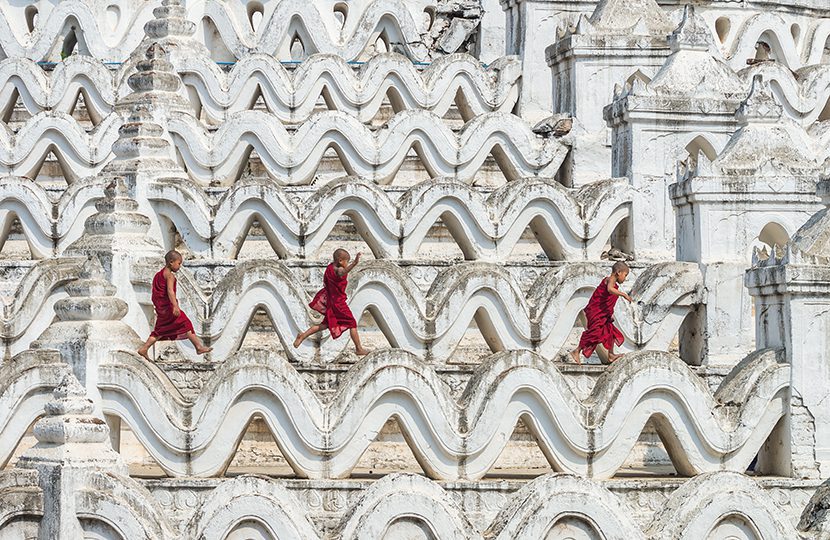
Three young monk are running and jumping on the Mya Thein Tan Pagoda at bagan, Mandalay
Then we visit the two-storey colonial home where Eric Blair, better known as George Orwell, used for the setting of his novel, Burmese Days. The ramshackle two-story teak house is now a police officer’s home just off the busy main road. In the front are weeds and some dogs lazing around. Katha was his last posting in the Imperial Police before returning to England in 1927, though in the anti-colonial novel he called the town Kyauktada. The British Club, also in the novel, still exists, as does the tennis court, pagoda and prison.
As we continue to sail over the next few days, I watch snapshots of river and rural life slip by. Milk-white pagodas with golden spires flashing in the sunlight; women and men in sarongs and naked kids bathing in the caramel-coloured water; a single file of saffron-clad monks walking to a monastery; children in white-and-green uniforms drifting slowly to school; farmers ploughing patchworks of fields with oxen; a man waist deep in the water gracefully casting a fishing net that opens like a fan in the morning light. Time, like the river, flows leisurely.
Then the boat slows down as the river narrows between towering, jungle-clad cliffs. The only sounds are birds and screeching monkeys coming from the untamed foliage. As the ship moves slowly in the quiet, tropical heat, heavily vegetated towering gorges get closer, which takes about two hours to pass. We’ve reached our furthest northern destination, Bhamo.
Returning downstream we stop at Weima, one of 36 government-run elephant camps in the north. Elephants are being washed in the slow-flowing river, while women carry pails of water hung by yokes balanced over a shoulder. Most of the mahouts use their elephants to help fell teak trees and drag the logs to the river to be shipped downstream. Myanmar has about 75 percent of the world’s teak.
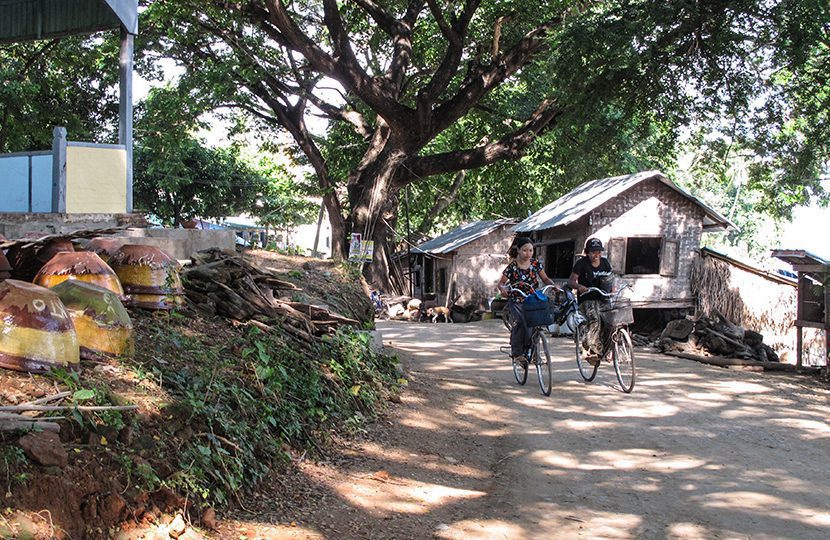
Simple village life in Myanmar
The next day we pull into Ma Lae village, timed perfectly to watch a Buddhist novitiation ceremony, an important rite of passage for all Burmese boys under 20 to become novice monks for a week or more. The boys are carried through town on decorated palanquins and then, in a temple, with their parents beside them, have their heads shaved and change into burgundy monk robes.
Back in temple-filled Mandalay we pick three unique ones to visit: the finely teak-carved Shwenandaw Monastery built in 1878; Kuthodaw Pagoda, with hundreds of small white stupas, and Buddhist texts carved into marble pages that are each 153 centimetres tall and 107 centimetres wide; and Mahamuni Paya, one of the most important pilgrimage sites in the country with the most revered image of the Buddha in Burma. Believed to be 2,000 years old, it’s been covered in tons of gold leaf over the centuries, except for its gleaming face which legend claims is a true likeness of Gautama Buddha.
On our final day we sail through the prow-splitting waters to Bagan, our last destination. Originally the capital of the Kingdom of Pagan, the rulers built between 4,000 and 10,000 temples between the 11th and 13th centuries. Marco Polo declared it as “one of the finest sights in the world.” It still is a wonder with about 2,500 monuments left scattered across some 80 square kilometres of flat plain.
I wander around this mystical, temple-studded landscape, stepping into the shadowy dark interiors of temples which display elaborate centuries-old religious murals and monks praying at the foot of towering Buddhas. Then, as sunset approaches, I make my way to Shwesandaw Paya, one of the largest pagodas. Its terraces are already crowded with people. A spectacular sunset of reds and oranges bleeds across the sky behind the pagoda. Then, in the dying glow of its last light, as darkness is about to drape the area, there is the silhouette of a woman standing perfectly still in a yoga pose at the edge of the highest terrace.
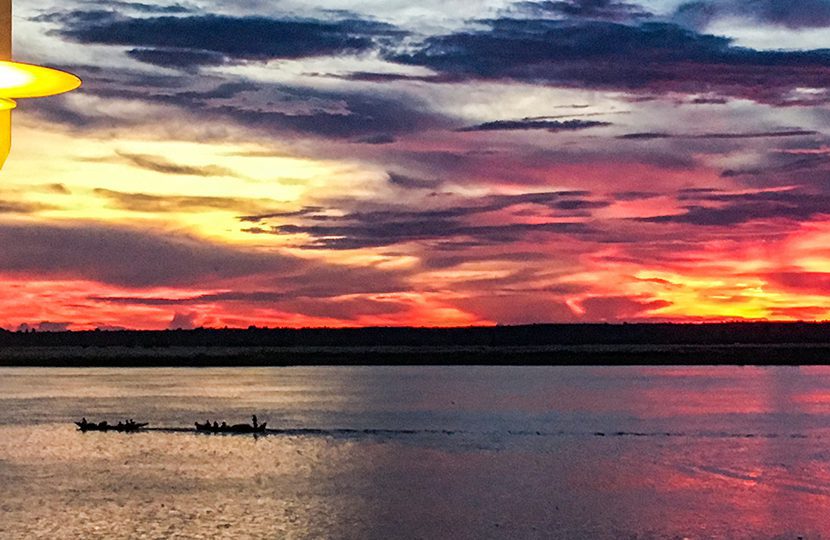
Serene sunsets as we sail along the river
There is something peaceful and timeless about the scene, like this journey has been, through times past in time present. ◼
Subscribe to the latest edition now by clicking here.
© This article was first published in Aug-Sept 2018 edition of World Travel Magazine.
If you would like to comment on this story or anything else you have seen on World Travel Magazine, head over to our Facebook page or message us on Twitter.
And if you liked this story, subscribe to our bi-monthly World Travel Magazine, a handpicked selection of editorial features and stories from Global Destinations, Inspire Me, Insider, Style File, Wellness & Travel, City Travel, Suite Life, At Leisure, Short Breaks and much more.


